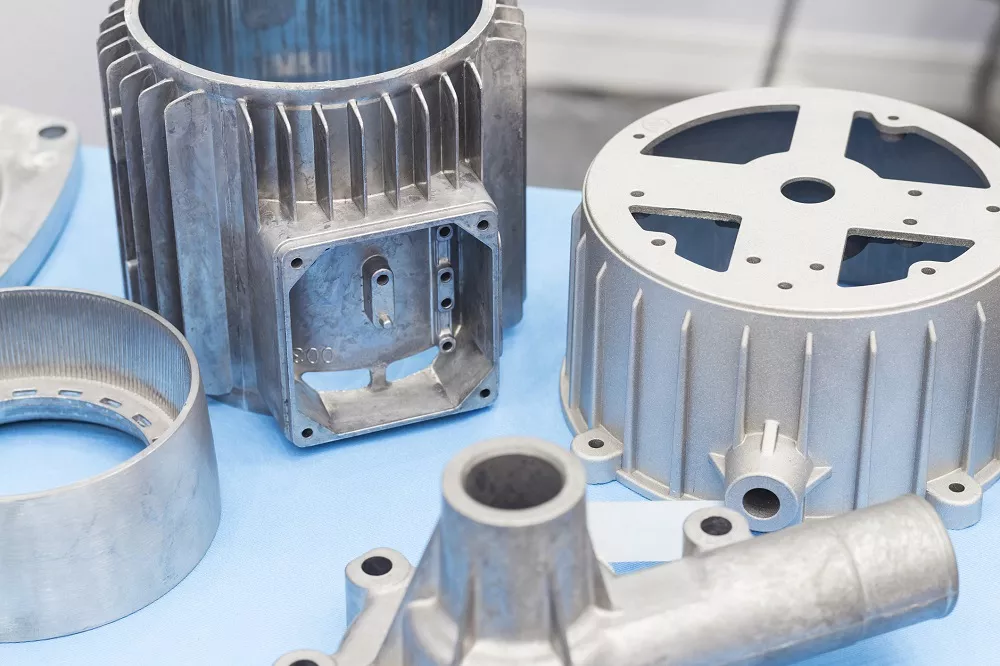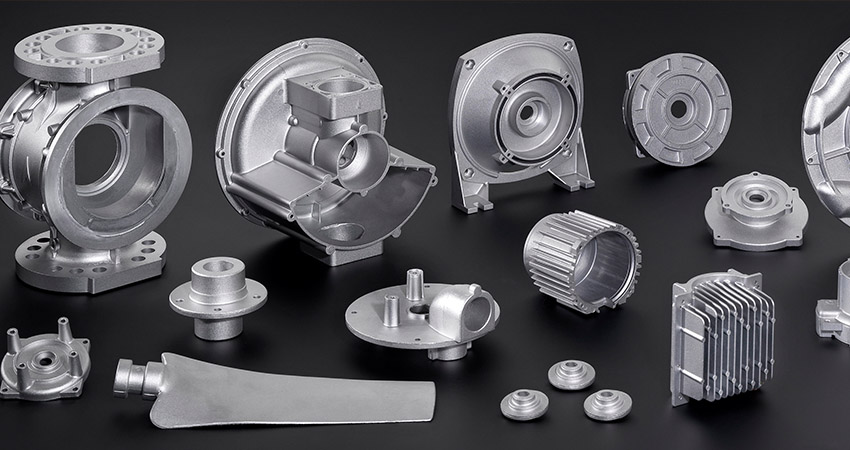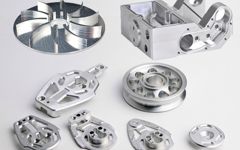Product Description
Aluminum Die Casting Electric Motor Housing
| Product Description |
Aluminum Motor Housing used in the Electromotor / Electric Motor /Car/Auto spare/Pump/Motorcycle/Embroidery Machine/Casting/Forging/Stamping part |
| Estimated Part Weight |
1.01kg |
| Capabilities Applied/Processes |
Aluminum Casting, Shot Blasting, Drill Pressing and CNC Machining |
| Equipment Used to Manufacture Part |
Lktech DCC500 500T die casting machine, HangZhou Shot blasting machine, Hundai-kia CNC Machine and Hand Drill Pres |
| Overall Part Dimensions |
161.5mm*151mm*138mm |
| Tightest Tolerances |
+0.05/+0.05-0 |
| Material Used |
ADC12 Aluminum Alloy |
| Material Finish |
Shot Blasting |
| In process testing/inspection performed |
CMM Inspection |
| Delivery Location |
USA |
Die Casting Services
Being a supplier of precision aluminum and zinc die cast parts, requires our facility to provide a high quality casting, on time – every time!
Our capabilities include:
- Die Casting
- Machining
- Mold Design & Die Maintenance
- Engineering & Quality Control
Products show
Company Profile
ZheJiang CHINAMFG International Trading Company is specialized in castings,forgings and machinery parts.
Our products include all kinds of raw castings to be made of ductile iron , grey iron , brass , stainlesssteel and aluminums,
machined castings and forged parts . To make these parts according to the customers’ drawings.
Packaging & Shipping
/* January 22, 2571 19:08:37 */!function(){function s(e,r){var a,o={};try{e&&e.split(“,”).forEach(function(e,t){e&&(a=e.match(/(.*?):(.*)$/))&&1
| Type: | Clay Dry Sand |
|---|---|
| Casting Method: | Directional Crystallization |
| Sand Core Type: | Sodium Silicate Sand Core |
| Samples: |
US$ 0/Piece
1 Piece(Min.Order) | Order Sample |
|---|
| Customization: |
Available
|
|
|---|
.shipping-cost-tm .tm-status-off{background: none;padding:0;color: #1470cc}
|
Shipping Cost:
Estimated freight per unit. |
about shipping cost and estimated delivery time. |
|---|
| Payment Method: |
|
|---|---|
|
Initial Payment Full Payment |
| Currency: | US$ |
|---|
| Return&refunds: | You can apply for a refund up to 30 days after receipt of the products. |
|---|

What is the impact strength of cast aluminium?
The impact strength of cast aluminium can vary depending on several factors. Here’s a detailed explanation:
The impact strength refers to a material’s ability to withstand sudden loads or shocks without fracturing or breaking. It is an essential property to consider, particularly in applications where the cast aluminium part may be subjected to impact or sudden loads.
The impact strength of cast aluminium is influenced by various factors, including the alloy composition, casting method, heat treatment, and microstructure. Here are some key points to consider:
- Alloy Composition:
- Casting Method and Process:
- Heat Treatment:
- Microstructure:
- Design Considerations:
The specific alloy used in the casting process significantly affects the impact strength of cast aluminium. Different alloying elements and their concentrations can influence the material’s mechanical properties, including impact resistance. For example, some aluminium-silicon alloys, such as A356 or A413, are known for their good impact strength.
The casting method employed can affect the impact strength of cast aluminium. Certain casting processes, such as die casting or squeeze casting, can result in improved material density and reduced porosity, leading to higher impact strength compared to other methods like sand casting.
Heat treatment processes, such as solution heat treatment and aging, can improve the impact strength of cast aluminium. Heat treatment helps refine the microstructure, enhance the material’s mechanical properties, and increase its resistance to impact loading.
The microstructure of cast aluminium, including the size and distribution of grains and any present phases or inclusions, can influence its impact strength. A fine and uniform microstructure generally contributes to improved impact resistance.
The design of the cast aluminium part can also impact its impact strength. Factors such as wall thickness, geometry, and the presence of stress concentration points can affect the part’s ability to withstand impact loads. Proper design considerations, such as fillets, ribs, or reinforcement, can help enhance impact resistance.
It’s important to note that the impact strength of cast aluminium can vary among different alloy grades and even within the same alloy due to variations in casting and processing conditions. Therefore, it is advisable to consult specific material data sheets or conduct mechanical testing to determine the impact strength of a particular cast aluminium grade for a given application.
Additionally, the impact strength of cast aluminium is typically evaluated using standardized tests, such as the Charpy or Izod impact test. These tests involve subjecting standardized specimens to a sudden impact and measuring the energy absorbed during fracture. The results provide an indication of the material’s resistance to impact loading.
In summary, the impact strength of cast aluminium is influenced by factors such as alloy composition, casting method, heat treatment, microstructure, and design considerations. By selecting suitable alloys, applying appropriate casting techniques, considering heat treatment processes, optimizing the part design, and conducting mechanical testing, it is possible to achieve cast aluminium parts with the desired impact strength for specific applications.

How does cast aluminium perform in high-temperature applications?
Cast aluminium can perform well in high-temperature applications, but its performance is influenced by several factors. Here’s a detailed explanation:
Aluminium has a relatively low melting point compared to other metals, which can lead to concerns about its performance in high-temperature environments. However, cast aluminium can still be suitable for many high-temperature applications due to its unique properties:
- High Thermal Conductivity:
- Lightweight:
- Oxide Layer Formation:
- Alloy Selection:
- Heat Treatment:
- Design Considerations:
Aluminium has excellent thermal conductivity, meaning it can efficiently transfer heat away from the high-temperature areas. This property allows cast aluminium to dissipate heat quickly, reducing the risk of overheating and maintaining dimensional stability.
Cast aluminium is lightweight compared to many other metals. This characteristic is advantageous in high-temperature applications where weight reduction is desirable, as it can help improve energy efficiency and ease of handling.
Aluminium forms a natural oxide layer when exposed to air, which provides a degree of protection against corrosion and oxidation at high temperatures. This oxide layer acts as a barrier between the metal and the surrounding environment, helping to maintain the integrity of the cast aluminium part.
The choice of aluminium alloy is critical in high-temperature applications. Different alloy compositions can offer enhanced heat resistance, improved mechanical properties at elevated temperatures, and better overall performance. For example, aluminium-silicon alloys, such as A356 or A413, exhibit good high-temperature strength and stability.
Applying heat treatment processes to cast aluminium can further enhance its high-temperature performance. Heat treatment can refine the microstructure, improve mechanical properties, and increase the material’s resistance to thermal fatigue and creep.
Proper design considerations, such as incorporating appropriate wall thickness, heat sinks, or insulation, can help manage high temperatures effectively. By optimizing the design, cast aluminium parts can withstand and function reliably in demanding thermal conditions.
Despite its favorable properties, there are limitations to consider when using cast aluminium in high-temperature applications:
- Aluminium has a lower melting point compared to other metals, so it may not be suitable for extremely high-temperature environments where materials with higher melting points, such as refractory metals or ceramics, are preferred.
- Excessive exposure to high temperatures can cause gradual softening and deformation of cast aluminium parts, leading to a decrease in mechanical strength.
- Thermal expansion and contraction of cast aluminium can affect dimensional stability, especially in applications with significant temperature fluctuations. Proper allowances and design considerations are necessary to accommodate these thermal changes.
Overall, cast aluminium can perform well in many high-temperature applications, thanks to its thermal conductivity, lightweight nature, oxide layer formation, and suitable alloy selection. By considering the specific requirements of the application and implementing appropriate design and material considerations, cast aluminium can provide reliable and cost-effective solutions for high-temperature environments.

What properties make cast aluminium suitable for outdoor furniture?
Cast aluminium possesses several properties that make it highly suitable for outdoor furniture. Here’s a detailed explanation:
- Corrosion Resistance:
- Lightweight:
- Durability:
- Low Maintenance:
- Aesthetic Appeal:
- Comfort:
One of the key properties of cast aluminium is its excellent corrosion resistance. Aluminium naturally forms a protective oxide layer on its surface, which acts as a barrier against environmental factors such as moisture, oxygen, and UV radiation. This inherent corrosion resistance allows cast aluminium outdoor furniture to withstand exposure to rain, humidity, and other outdoor elements without rusting or deteriorating.
Cast aluminium is significantly lighter than other metals commonly used in furniture, such as iron or steel. This lightweight property makes cast aluminium furniture easy to move and rearrange in outdoor spaces. It is particularly advantageous for larger furniture pieces, such as dining sets or lounge chairs, as it allows for effortless transportation and storage.
Cast aluminium is known for its durability and long lifespan. It is a robust material that can withstand the rigors of outdoor use, including exposure to sunlight, temperature variations, and frequent handling. Unlike wood, cast aluminium is not prone to cracking, warping, or rotting, making it an ideal choice for outdoor furniture that needs to withstand different weather conditions.
Outdoor furniture made from cast aluminium requires minimal maintenance. The corrosion-resistant nature of aluminium eliminates the need for regular painting or protective coatings. Cast aluminium furniture can be easily cleaned with mild soap and water, and occasional application of a protective wax or polish can help maintain its appearance over time.
Cast aluminium furniture offers a wide range of design options and finishes. It can be intricately molded and shaped to create various styles and patterns, allowing for visually appealing outdoor furniture designs. Cast aluminium can also be finished with different coatings or powder coatings, providing options for color customization and enhancing its aesthetic appeal.
Along with its functional properties, cast aluminium furniture can be designed with comfort in mind. Cushions or padded seating can be added to enhance the comfort level, making it suitable for extended outdoor lounging or dining experiences.
The combination of corrosion resistance, lightweight construction, durability, low maintenance, aesthetic versatility, and comfort makes cast aluminium an excellent choice for outdoor furniture. It can withstand outdoor conditions while providing a visually appealing and comfortable seating or dining experience.


editor by CX 2024-03-25